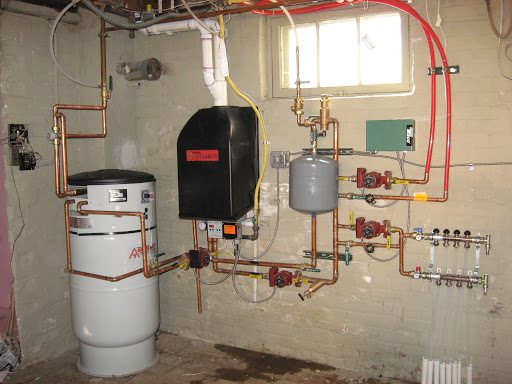Essential Tips on Caring for Your Home's Hot Water System
Essential Tips on Caring for Your Home's Hot Water System
Blog Article
In this article in the next paragraphs you can locate additional sensible information involving Tips on Maintaining a Water Heater.

Warm water is crucial for day-to-day convenience, whether it's for a refreshing shower or washing dishes. To ensure your warm water system runs effectively and lasts longer, normal maintenance is key. This short article provides sensible ideas and insights on just how to preserve your home's hot water system to stay clear of disturbances and expensive repair work.
Intro
Preserving your home's hot water system may seem challenging, but with a couple of easy actions, you can ensure it runs smoothly for several years ahead. This guide covers every little thing from comprehending your warm water system to DIY upkeep ideas and understanding when to hire specialist assistance.
Importance of Preserving Your Hot Water System
Routine upkeep not just extends the life-span of your hot water system yet also guarantees it operates successfully. Disregarding upkeep can lead to lowered effectiveness, greater energy costs, and also early failure of the system.
Indicators Your Hot Water System Requirements Upkeep
Knowing when your hot water system requires interest can stop significant issues. Keep an eye out for signs such as irregular water temperature level, odd noises from the heating system, or corroded water.
Understanding Your Hot Water System
Prior to diving into maintenance tasks, it's practical to understand the fundamental parts of your warm water system. Typically, this consists of the hot water heater itself, pipes, anode poles, and temperature controls.
Regular Monthly Upkeep Tasks
Normal month-to-month checks can help catch minor problems before they rise.
Purging the Water Heater
Flushing your water heater gets rid of debris build-up, boosting effectiveness and prolonging its life.
Checking and Changing Anode Rods
Anode rods protect against corrosion inside the container. Examining and changing them when worn out is critical.
Inspecting and Adjusting Temperature Level Setups
Readjusting the temperature settings makes sure optimal efficiency and safety and security.
Do It Yourself Tips for Upkeep
You can perform numerous maintenance tasks yourself to maintain your hot water system in top condition.
Looking for Leaks
On a regular basis inspect pipelines and connections for leaks, as these can cause water damage and higher costs.
Examining Pressure Relief Valves
Examining the stress relief valve guarantees it operates appropriately and stops excessive stress build-up.
Protecting Pipelines
Shielding hot water pipes minimizes warm loss and can conserve energy.
When to Call an Expert
While DIY upkeep is advantageous, some concerns require specialist expertise.
Complicated Problems Requiring Specialist Assistance
Examples consist of significant leaks, electrical problems, or if your hot water heater is continually underperforming.
Regular Professional Maintenance Conveniences
Expert upkeep can include thorough examinations, tune-ups, and making sure compliance with safety and security criteria.
Final thought
Normal maintenance of your home's hot water system is essential for performance, durability, and cost financial savings. By adhering to these suggestions and knowing when to look for expert help, you can ensure a reliable supply of warm water without unforeseen disruptions.
How to Maintain an Instant Hot Water Heater
Before tinkering with your hot water heater, make sure that it’s not powered on. You also have to turn off the main circuit breaker and shut off the main gas line to prevent accidents. Also turn off the water valves connected to your unit to prevent water from flowing into and out of the appliance. 2. When you’re done, you have to detach the purge valves’ caps. These look like the letter “T†and are situated on either side of the water valves. Doing so will release any pressure that has accumulated inside the valves while at the same time avoid hot water from shooting out and burning your skin. 3. When the purge valves’ caps are removed, you have to connect your hosing lines to the valves. Your unit should have come with three hoses but if it didn’t, you can purchase these things from any hardware or home repair shops. You can also get them from retail stores that sell water heating systems. Read the user’s manual and follow it to complete this task properly. When the hosing lines are connected, open the purge port’s valves. 4. You should never use harsh chemical cleaners or solutions when cleaning your unit. Make use of white vinegar instead. It should be undiluted and you’ll probably use about 2 gallons. 5. Now flush your water heater. This task should probably take about 40 minutes. We can’t give you specific directions for this because the procedure is carried out depending on the type, model and brand of your heater. With that being said, refer to the user’s manual. 6. When you’re done draining the unit, you have to turn off the purge port valves again. Remove the hosing lines that you earlier installed on each of the water valves. Put the valve caps (purge port) back in their respective places and be very careful so as not to damage the rubber discs that are found inside these caps. 7. Now that everything’s back in place, check your user’s manual again to find out how to reactivate your water heating system. 8. Once it is working, turn one of your hot water faucets on just to let air pass through the heater’s water supply pipes. Leave the tap on until water flows smoothly out of it. https://www.orrplumbing.com/blog/2014/september/how-to-maintain-an-instant-hot-water-heater/

Do you really like more info about Tips on Maintaining a Water Heater? Give feedback below. We'd be happy to know your opinions about this entry. We hope that you visit us again in the near future. Sharing is good. You just don't know, you may be helping someone out. I cherish your readership.
Contact Report this page